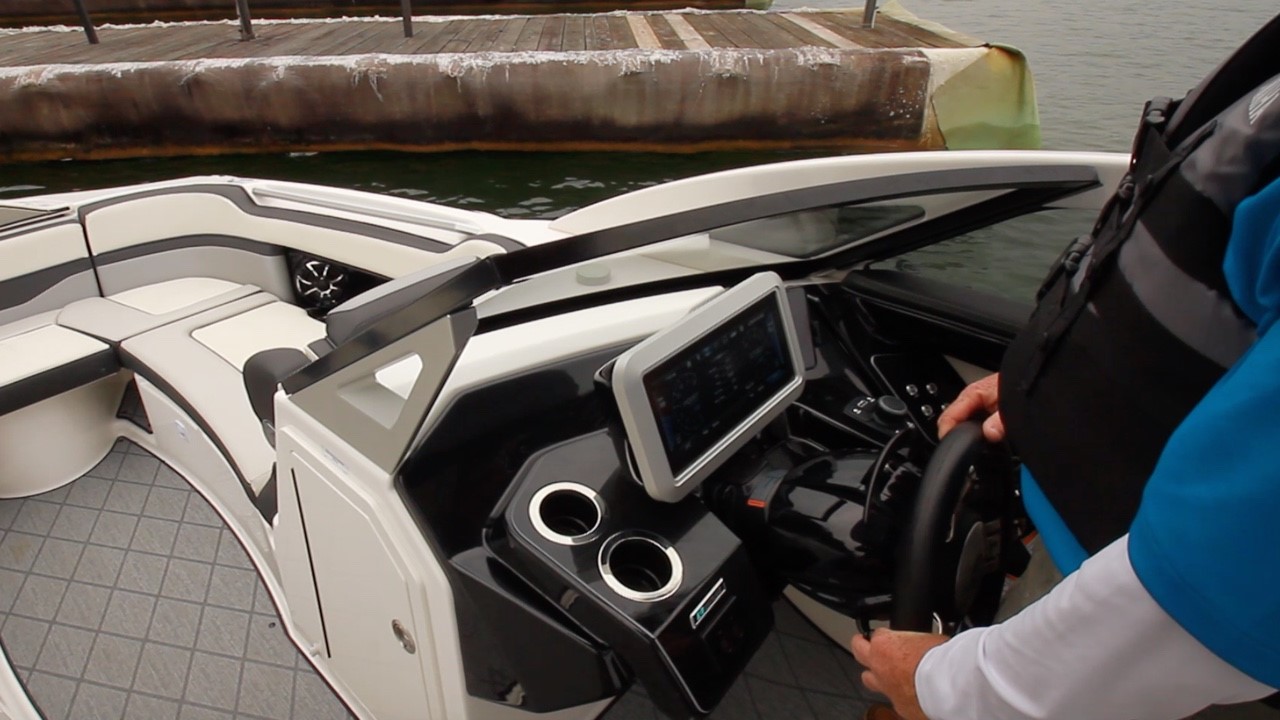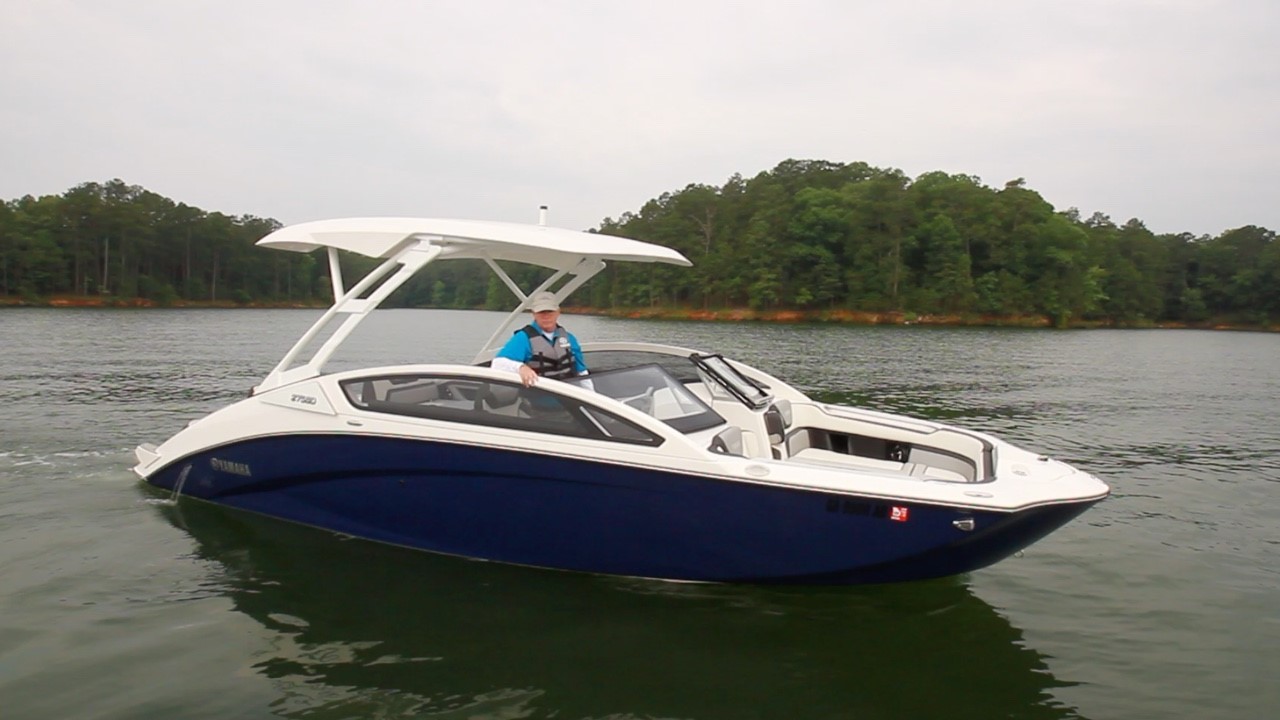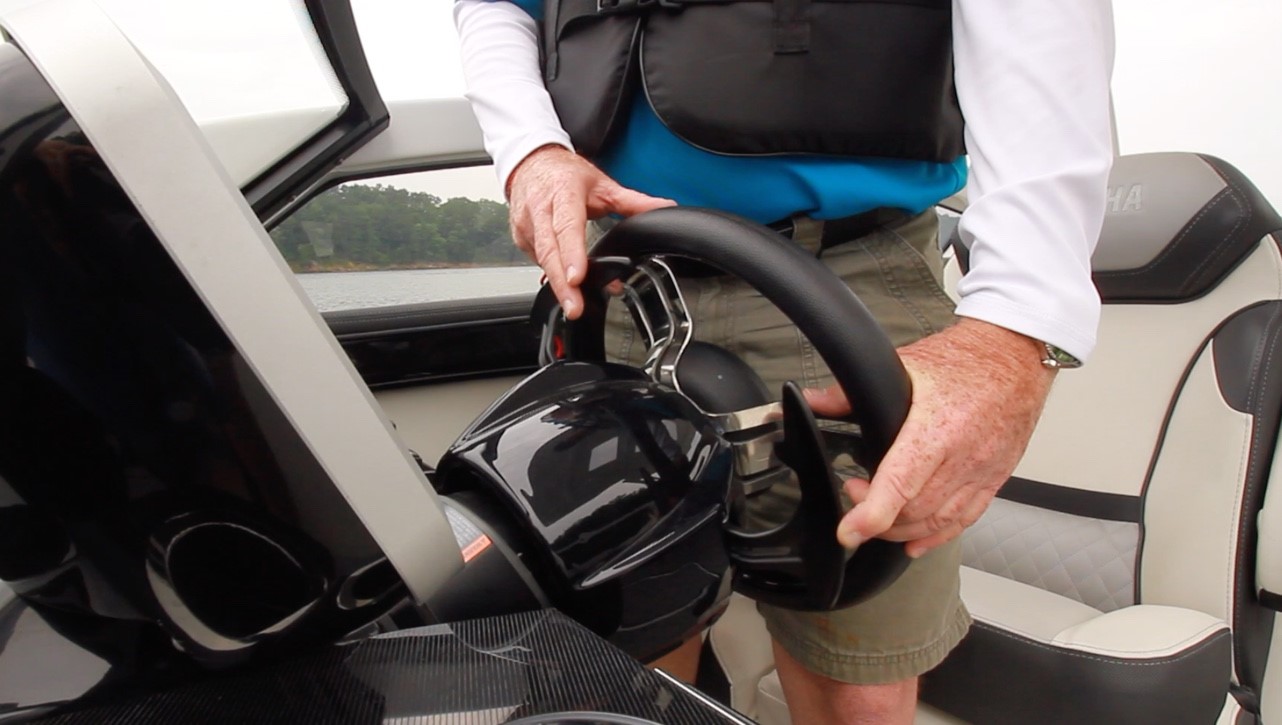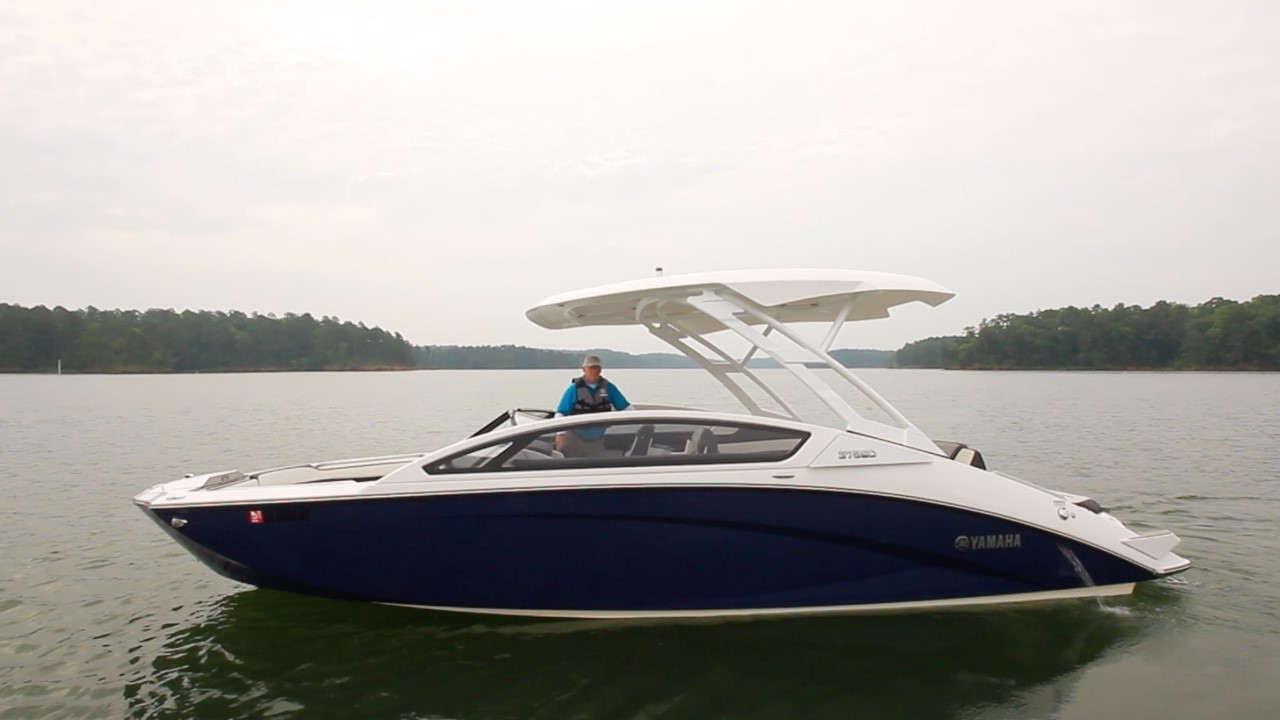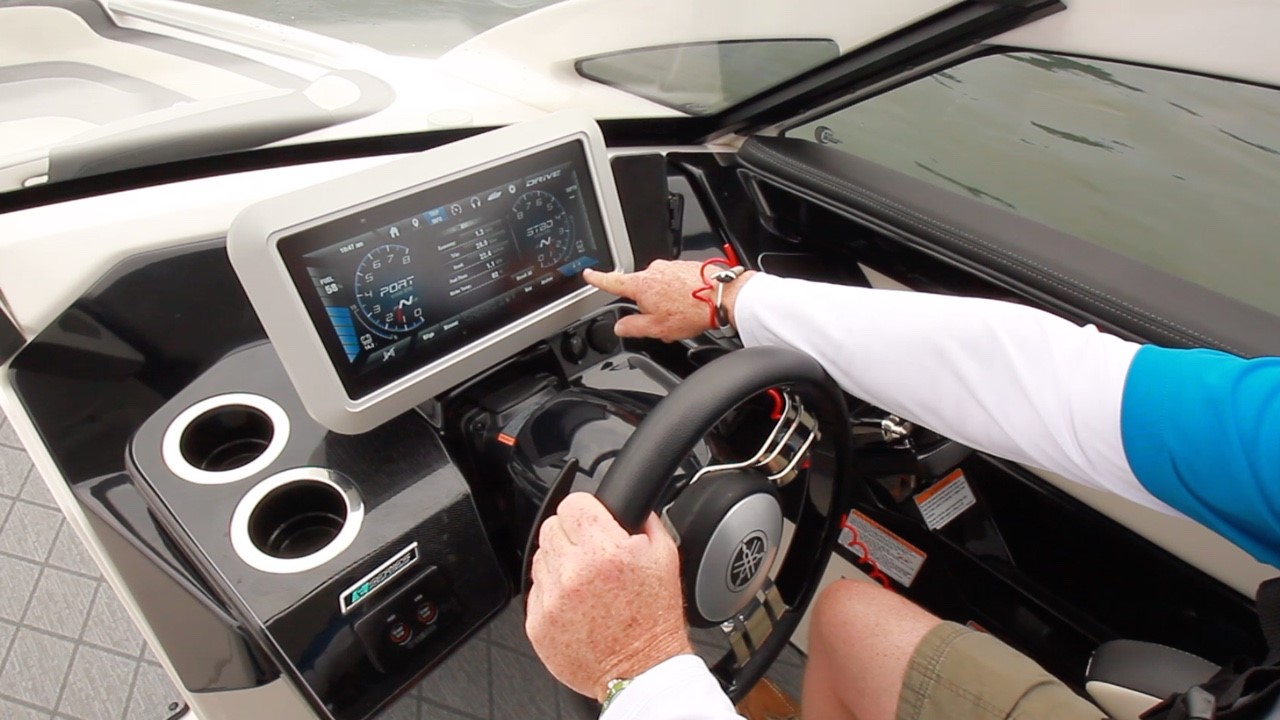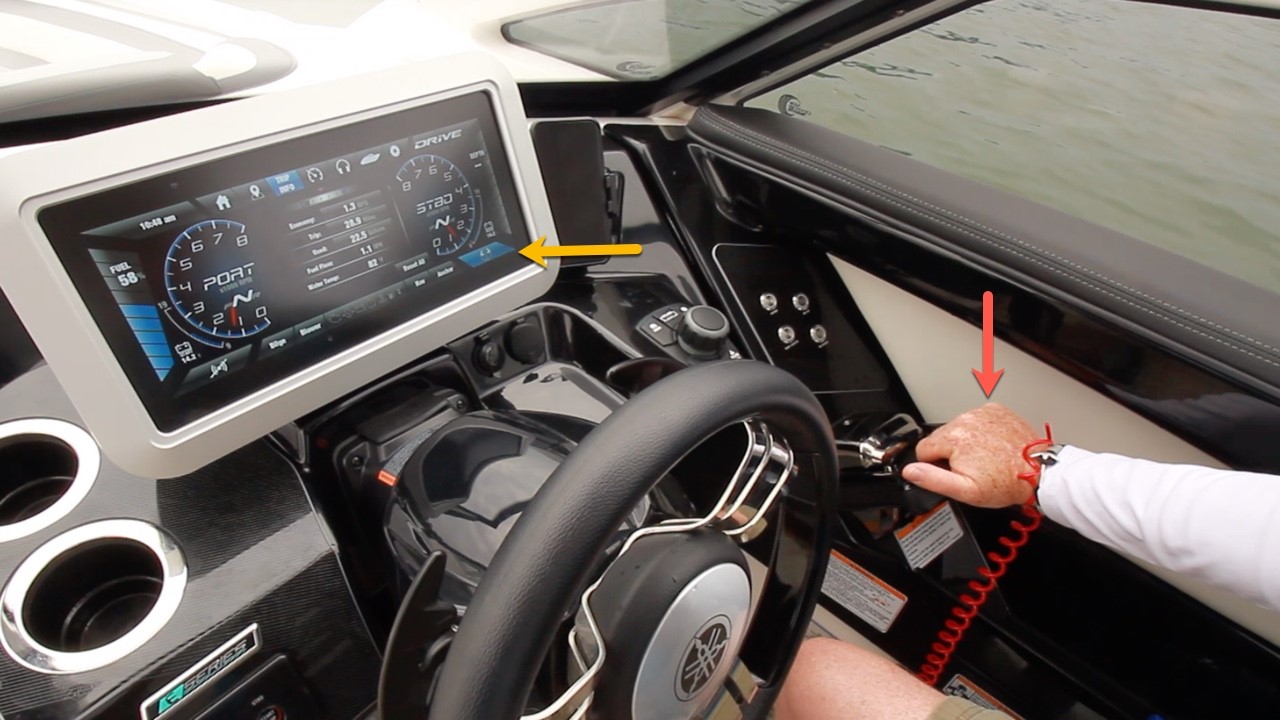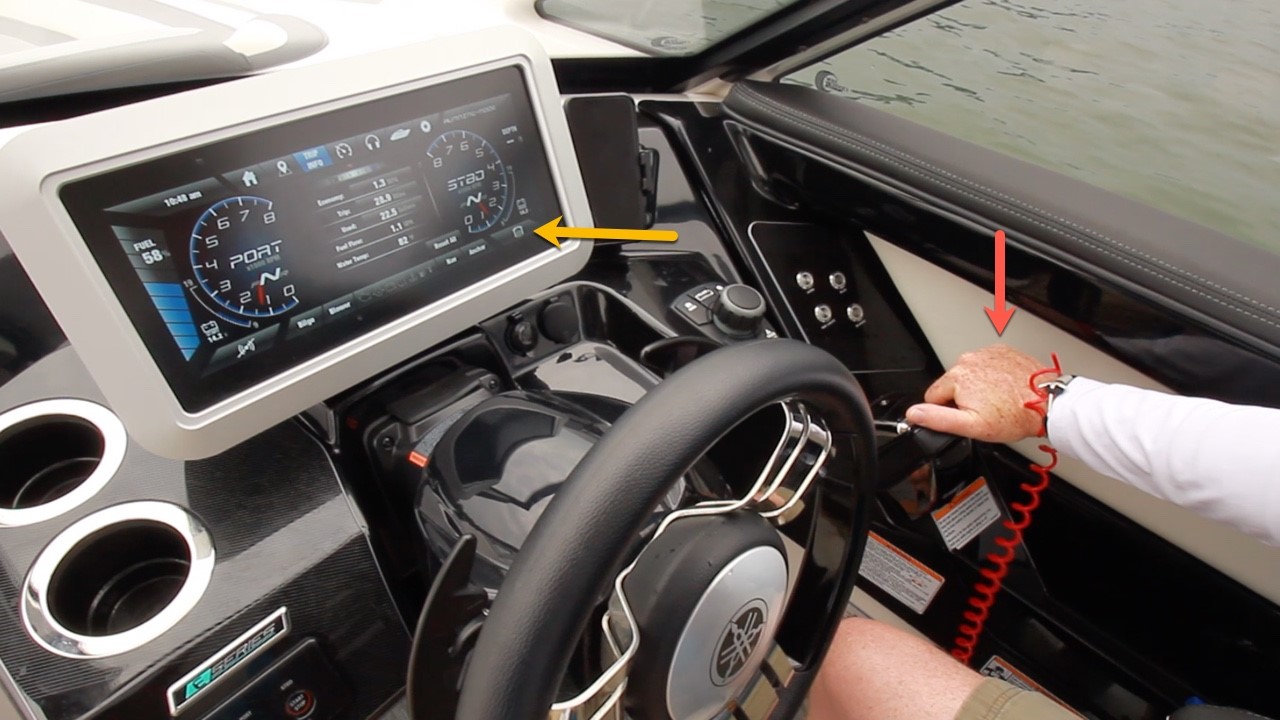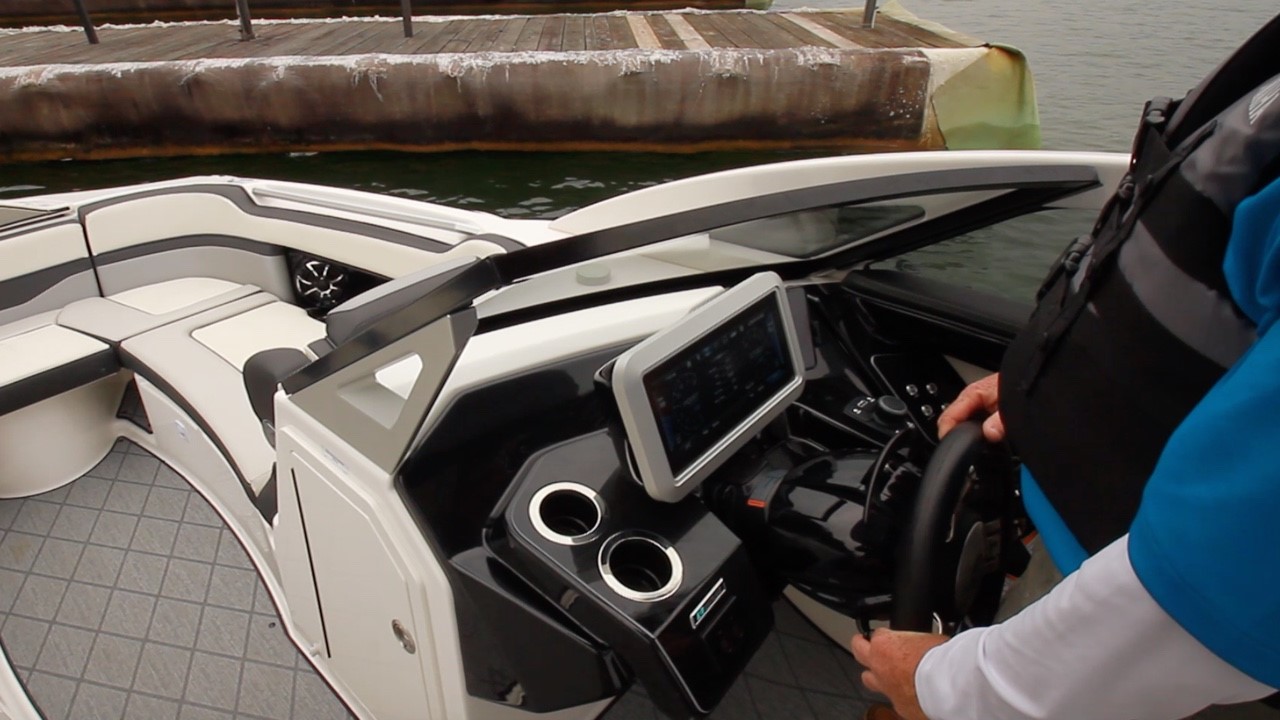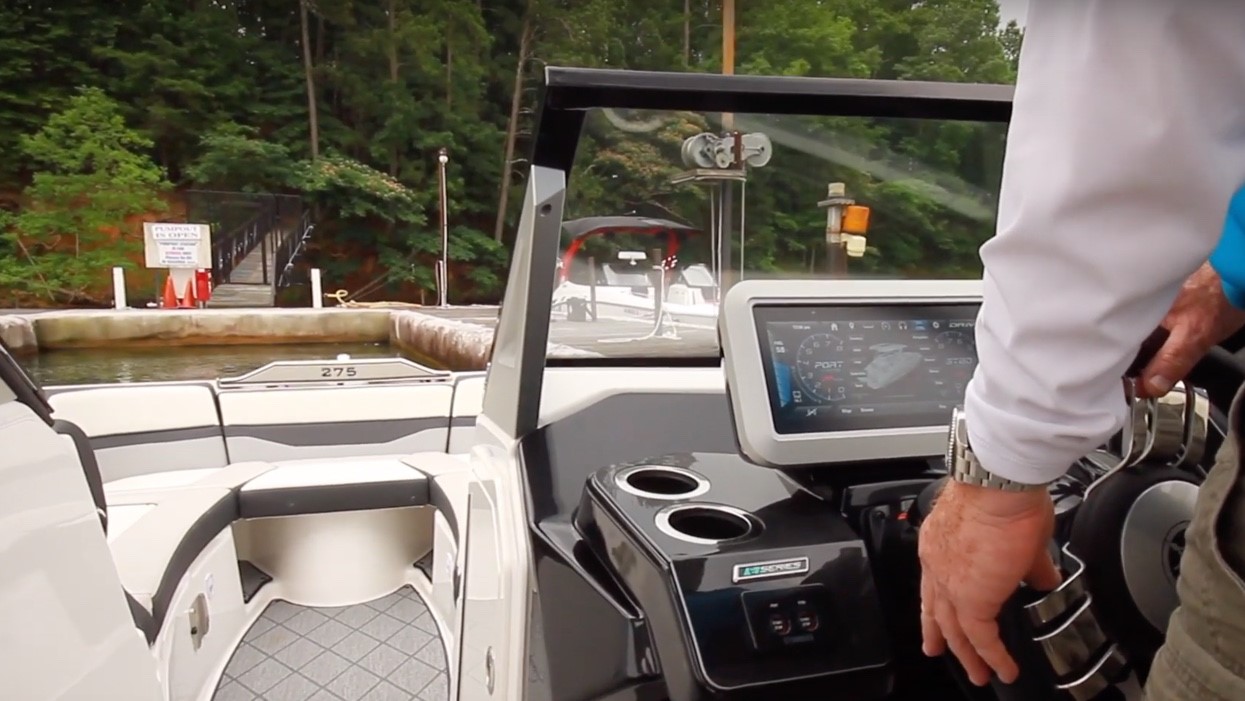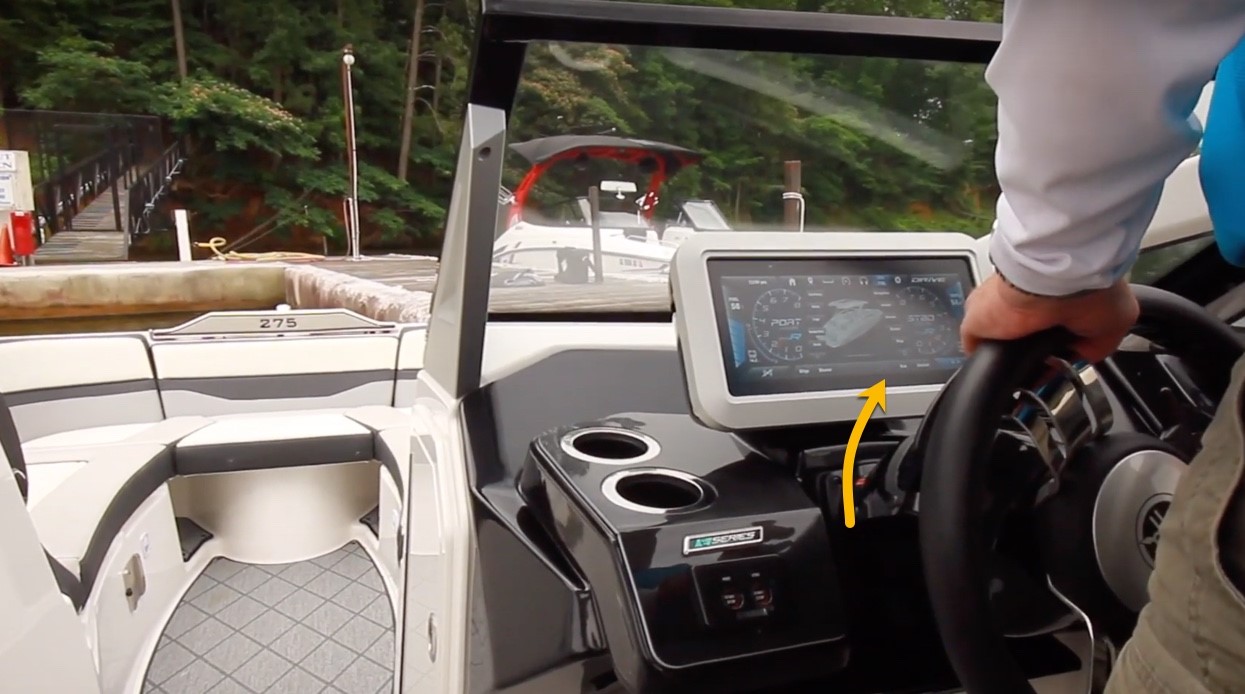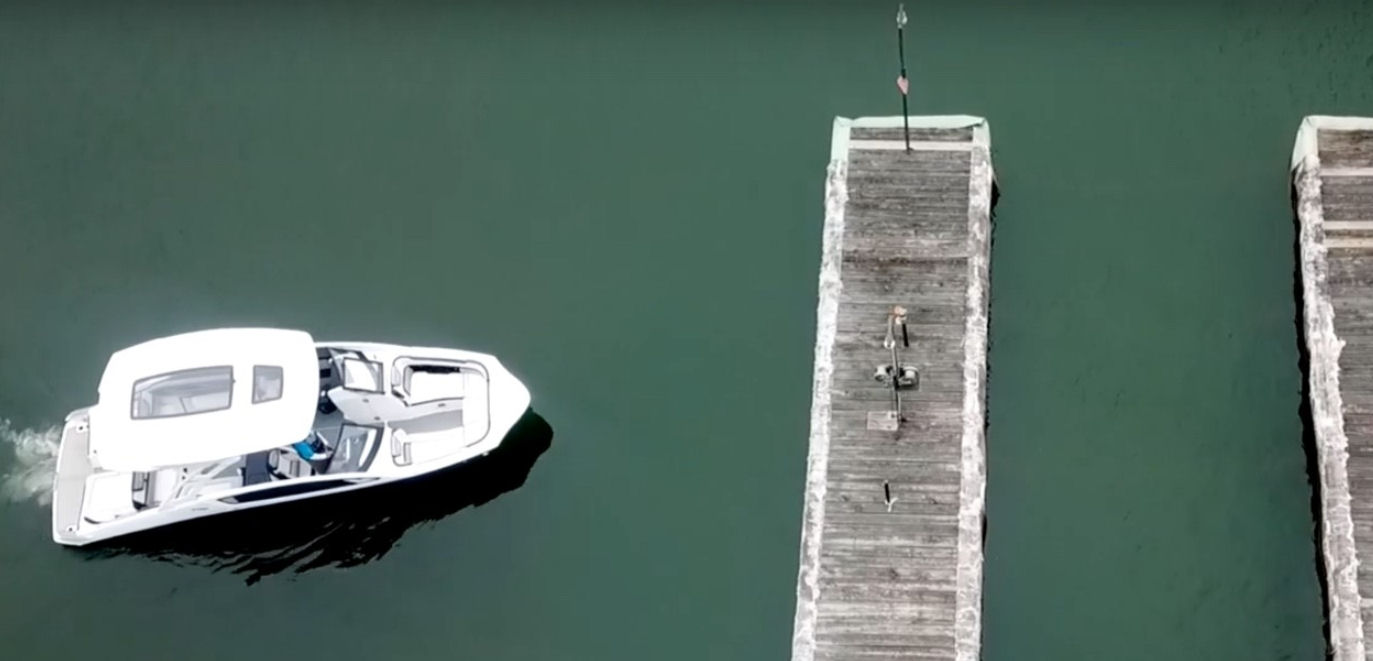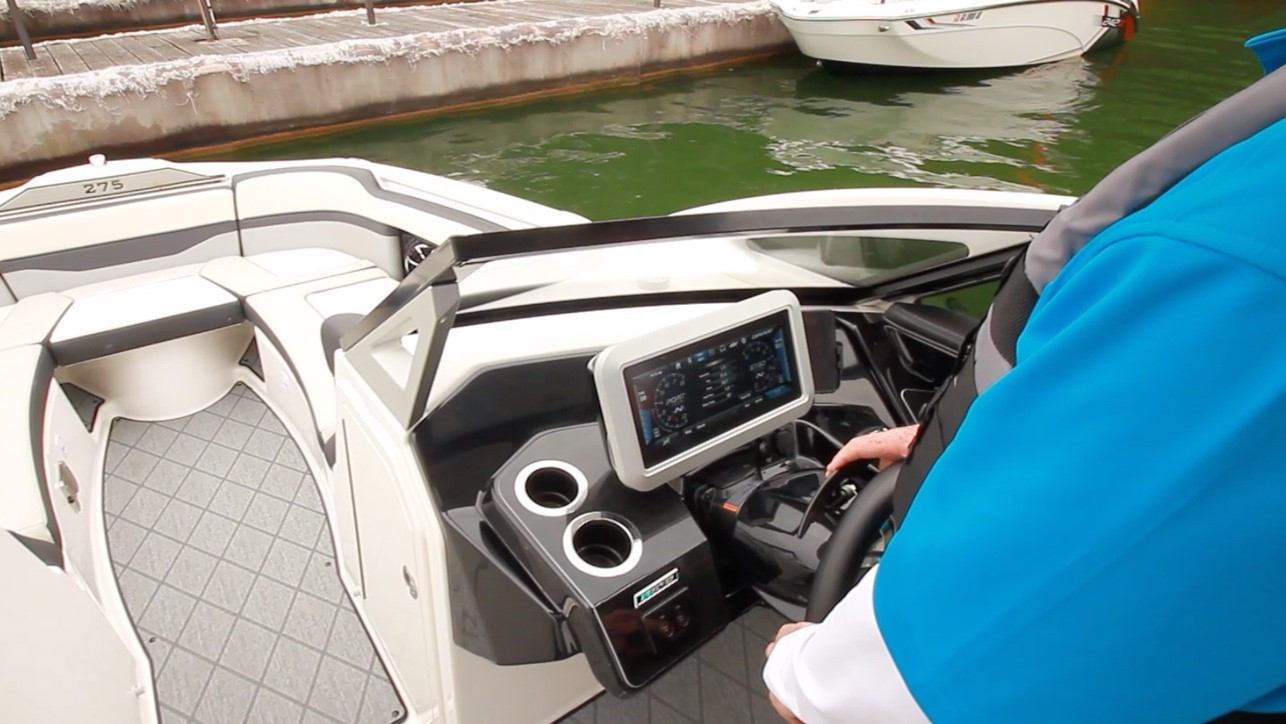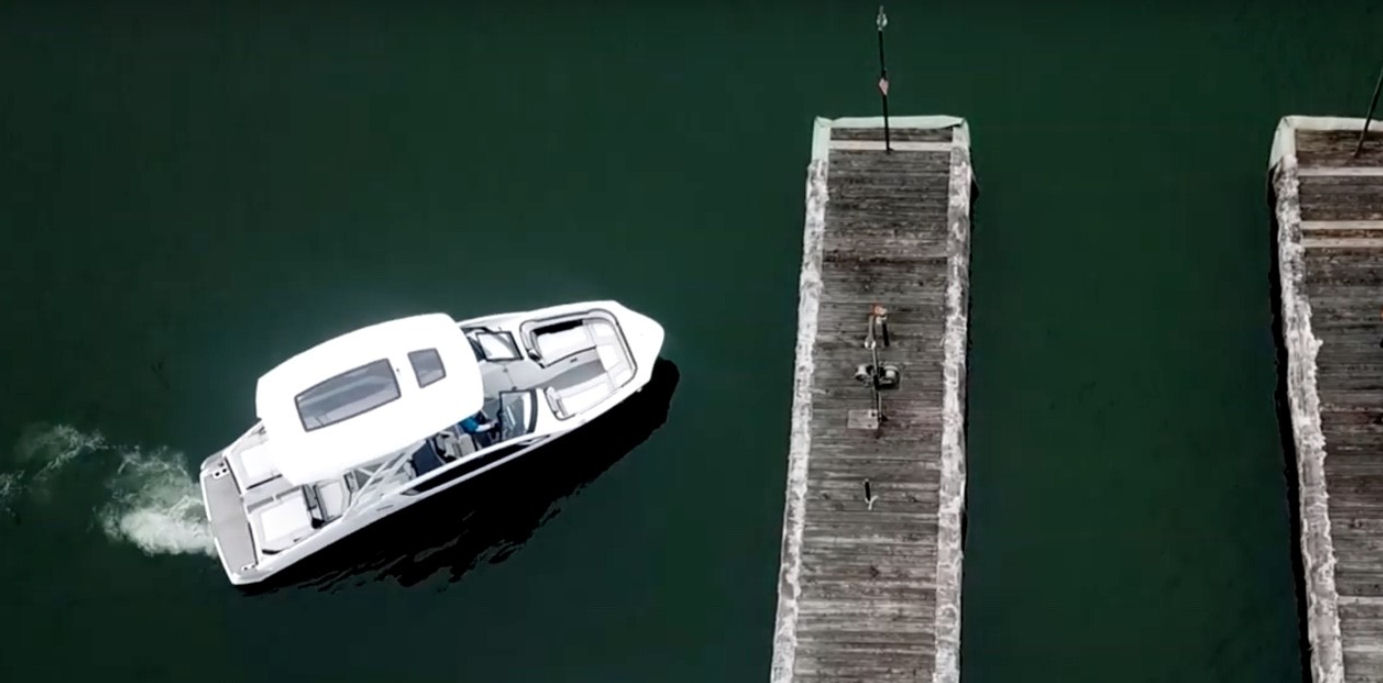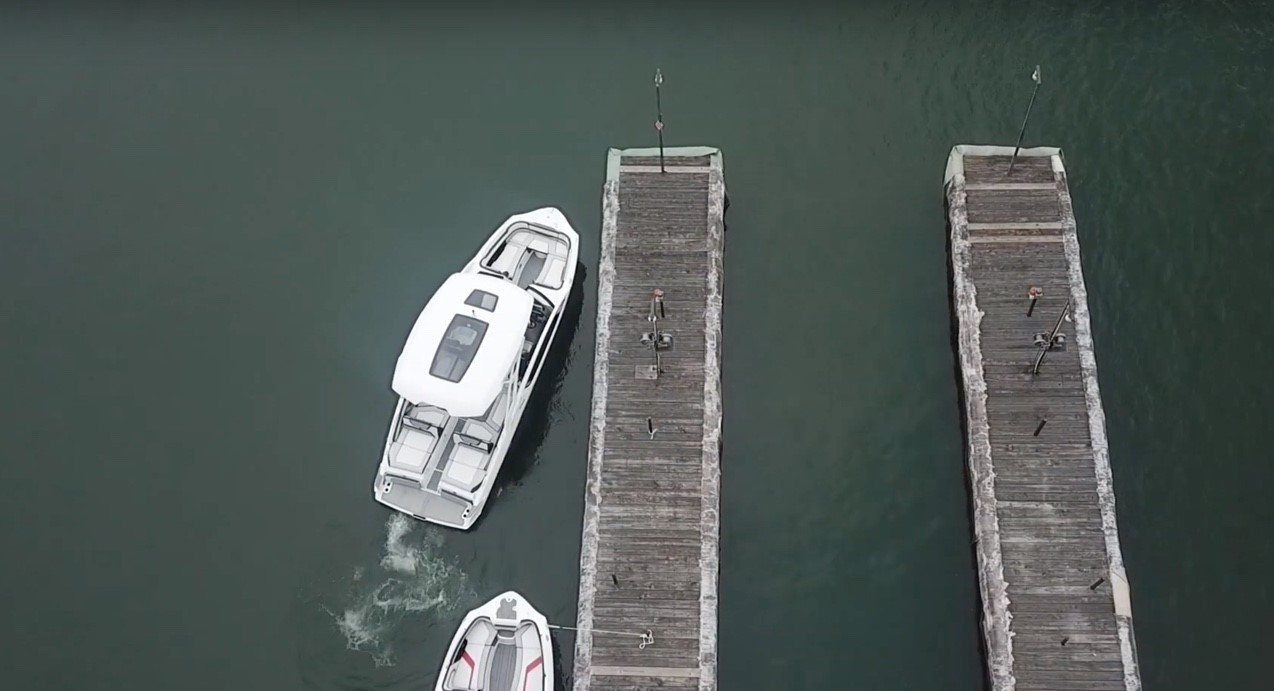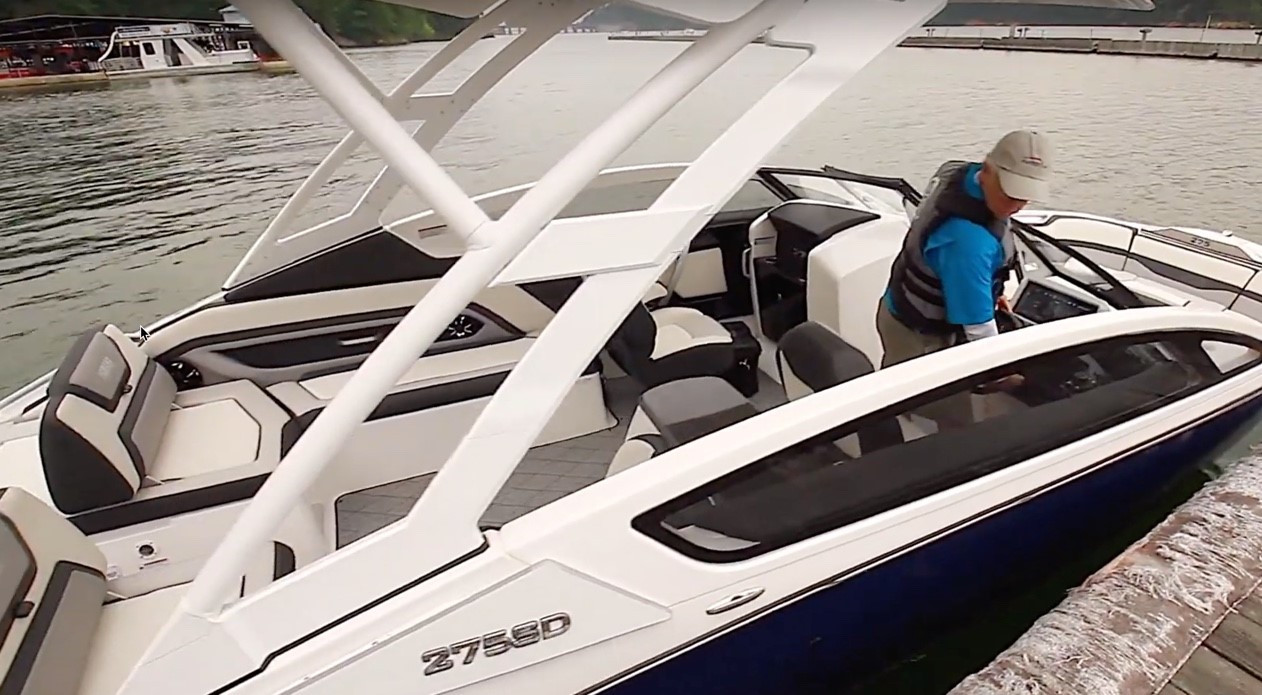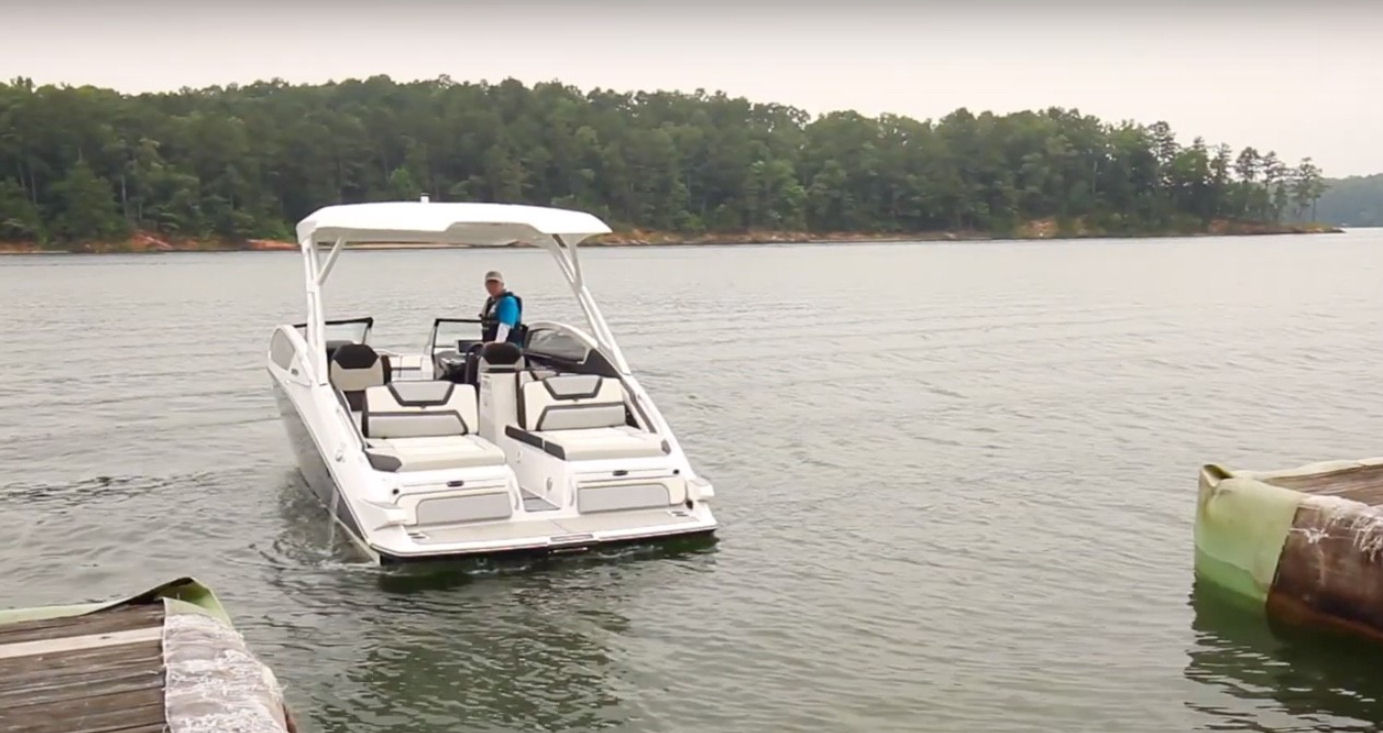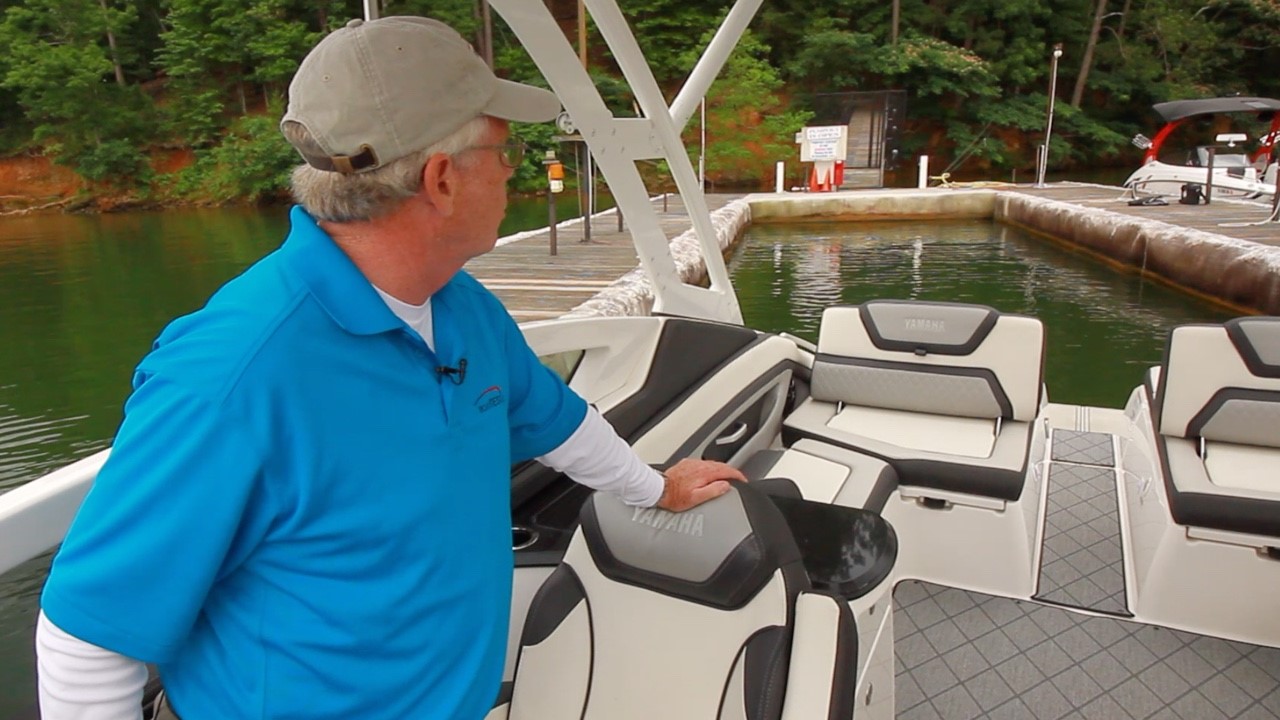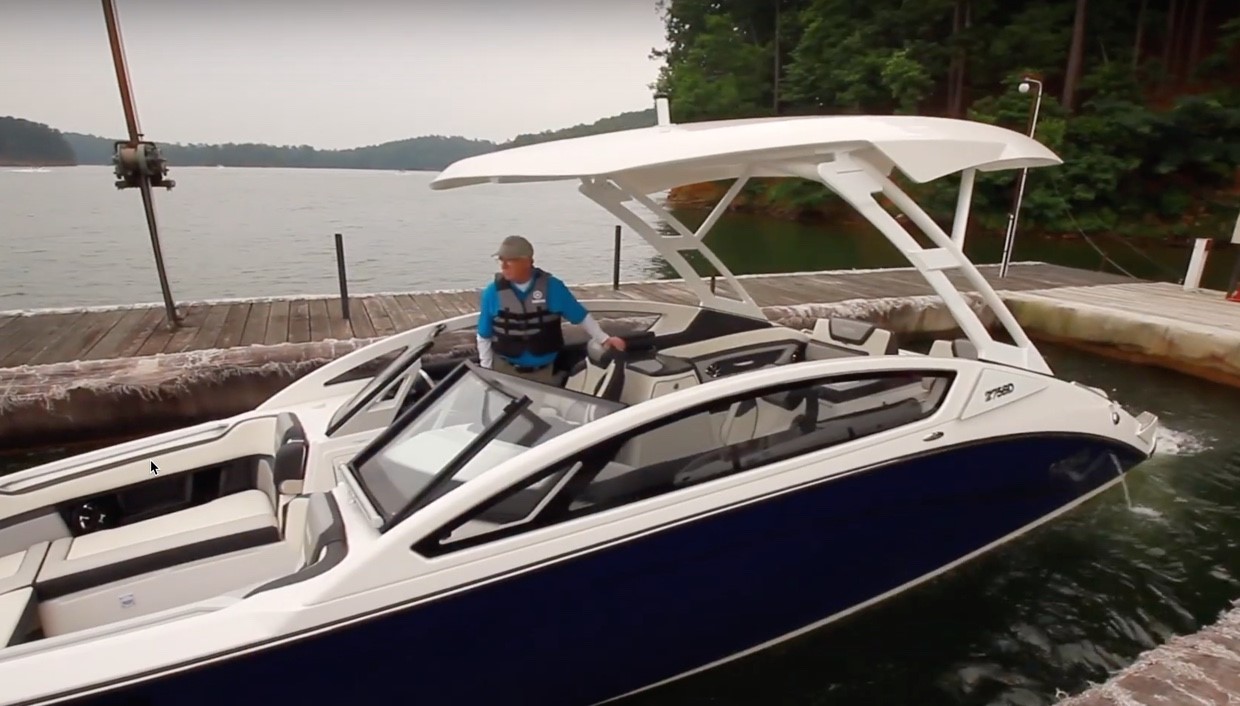Access More Boat Tests
Already have an account? Login
Yamaha DRiVE Technology
Brief Summary
Water jet driven boats have a reputation for being difficult to maneuver in close-quarter situations such as docking or crowded traffic. When Yamaha introduced its latest series of dual engine jet boats, they touted a new technology they call DRiVE, which they claim would make close-in maneuvering much easier.
We tested the DRiVE system and it proved to be so intuitive and simple to use that practically anyone could manage even in the most challenging situations – our report.
Key Features
- Enhanced low speed maneuverability
- Steering wheel mounted control paddles
- Digital shift and throttle controls
- Connext touchscreen interface
Captain's Report
Captain’s Report by Capt. Mark Kellum
Mission
Yamaha’s mission was to create an intuitive system that would make a twin-engine jet boat easy to maneuver in tight quarters situations, such as docking at a crowded marina.
Major Features
- Steering wheel-mounted control paddles
- Short throw steering
- Limited controlled thrust
The right-hand paddle mounted at 2 o’clock on the back side of the wheel controls forward thrust and the left-hand paddle mounted at 10 o’clock controls the reverse thrust.
When in DRiVE mode the steering becomes more abbreviated, going from 1¼ turns from lock-to-lock in normal mode to ½ turn in DRiVE mode, while keeping the full range of directional thrust.
A 12.3” (31.24 cm) Connext touchscreen makes changing modes simple. Alternatively, a joystick mouse is also provided as a point and click on the Connext screen.
The digital controls work in conjunction with the DRiVE Technology.
Performance
The Yamaha DRiVE Technology combines the steering, forward and reverse thrust paddles, limited no-wake-style levels of thrust and the Connext display to engage and disengage. If the digital shift and throttle binnacle is put into gear, DRiVE will automatically disengage.
The operator places the Yamaha 275SD in neutral and then can choose between individual shift and throttle mode for controlling the engines separately, single shift and throttle mode for synchronized operation, or, DRiVE mode for close-in maneuvering using the paddles on the wheel in place of the traditional throttles and shifters. When in DRiVE mode, the thrust level is limited to no-wake speeds under 3000 rpm.
With a jet boats ability to direct thrust and turn nearly in her own length when stopped, there is no need to split the engines so one is going forward and the other reversed that prop driven boats might use to torque the boat around - a simple directional thrust of the jets suffices.
A simple mnemonic way to remember which paddle is forward is this suggested phrase, “go right ahead.”
Operation
Using the Yamaha DRiVE Technology proved to be intuitive and, in many situations, can be operated with a single hand on the wheel, allowing the operator to turn and observe the boat’s position. It is important to remember that the Yamaha 275SD is a jet boat with no rudders and like its siblings, it won’t steer without a burst of vectored thrust.
Bow-in Docking
With bow-in, the operator is able to keep both hands on the wheel and paddles. The operator does not have to reach for the shift and throttle binnacle with one hand while holding the wheel with the other. And if the operator chooses to stand while docking, that’s not a problem.
Face Dock Approach
At times, skippers may need to dock in locations where they parallel park the boat. The Yamaha DRiVE Technology makes it stress-free.
When in a tight docking situation be sure to look forward and to the rear. It may take a few bursts of forward thrust and reverse thrust to avoid bumping other boats. The beauty of the Yamaha DRiVE Technology is that the operator can keep both hands on the wheel and in contact with the paddle thrust controls at the same time.
Stern-in Docking
Stern-in docking with the Yamaha DRiVE Technology clearly demonstrates one of the added benefits of the system. The operator is able to complete the maneuver with a single hand on the wheel while turned to look astern during docking.
Observations
With the Yamaha DRiVE Technology, Yamaha set out to develop a system that would make their largest models to date, the Yamaha 275 Series, easy to manuever. When the captains at BoatTEST.com first heard about DRiVE Technology, knowing it was developed by Yamaha, we pretty much thought it would be cool.
After testing DRiVE on the Yamaha 275SD, we were impressed with how well it performed. It is simple and intuitive and builds a tremendous amount of confidence when operating this 27' (8.23 m) luxury jet boat in close quarters. With the Yamaha DRiVE Technology, anyone capable of docking prop boats should be able to dock the Yamaha 275 Series models with ease.

